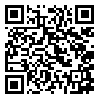BibTeX | RIS | EndNote | Medlars | ProCite | Reference Manager | RefWorks
Send citation to:
URL: http://hnmj.gums.ac.ir/article-1-365-en.html
Parasomnia in the Students of Primary Schools
By: Shafipour S Z1, Yousef Gomrokchi M2*, Paryad E3, Atrkarroushan Z4
- ( Department of Nursing (Pediatrics), Instructor, School of Nursing and Midwifery, Guilan University of Medical Sciences, Rasht, Iran
- ( Department of Nursing (Pediatrics), Instructor, Islamic Azad University, Abhar, Iran
3) Department of Nursing (medical-surgical), Instructor, School of Nursing and Midwifery, Guilan University of Medical Sciences, Rasht, Iran
4) Bio- Statistics, Assistant professor, Social Determinants of Health Research Center, School of Nursing and Midwifery, Guilan University of Medical Sciences, Rasht, Iran
Received: 2013/02/18
Accepted: 2013/09/02
Abstract
Introduction: Parasomnia is circadian behaviors that occur to the people while they sleep. Repeating parasomnia could reduce quality and quantity of sleeping pattern. This sleeping disorder will refer to severe insomnia among children.
Objective: The aim of this study is to find out parasomnia among primary schools student.
Methods: This is a cross-sectional study. The research society includes primary schools children between the ages of 7 to 11years old, in Rasht among 2009-2010. All together 768 boys and girls were selected from both districts using multi stage cluster method. The tool for gathering data was a questionnaire including two sections. The first section was about demographic information and the second section includes questions about parasomnia behaviors based on Owens questionnaire about sleeping habits, was answered by mothers of children. Descriptive and inferential Statistics (chi square) methods were used to data analysis.
Results: The result showed that the most common parasomnia behavior was restlessness (37.2%) based on mothers expression. There was also significant relationship between the parasomnia behaviors of the children and their age (p<0.005), sex (p<0.005) and parents education(p<0.004)
Conclusion: Based on parasomnia’s behavior within children and its effects on their life and health condition (psychologically and physically), parents must learn about who to detect and prevent their children sleeping disorder.
Keywords: Parasomnias, Sleep Disorders, Child, Students
*Corresponding Author: Mehri Yousef Gomrokchi, Abhar, Islamic Azad University
Email: Mehrgomrokchi@gmail.com
Received: 2014/12/9 | Accepted: 2014/12/9 | Published: 2014/12/9
| Rights and permissions | |
 | This work is licensed under a Creative Commons Attribution-NonCommercial 4.0 International License. |



